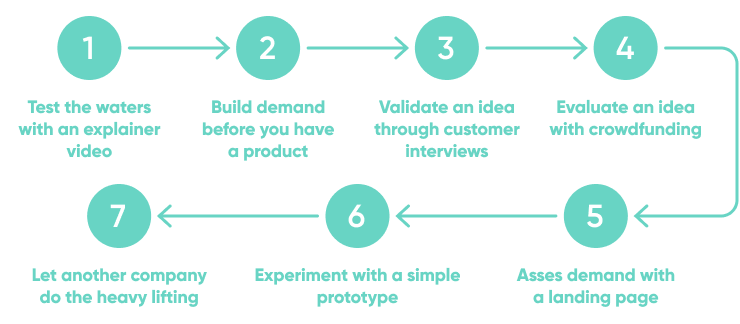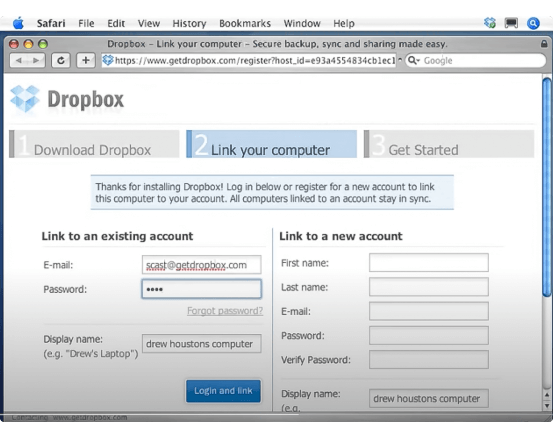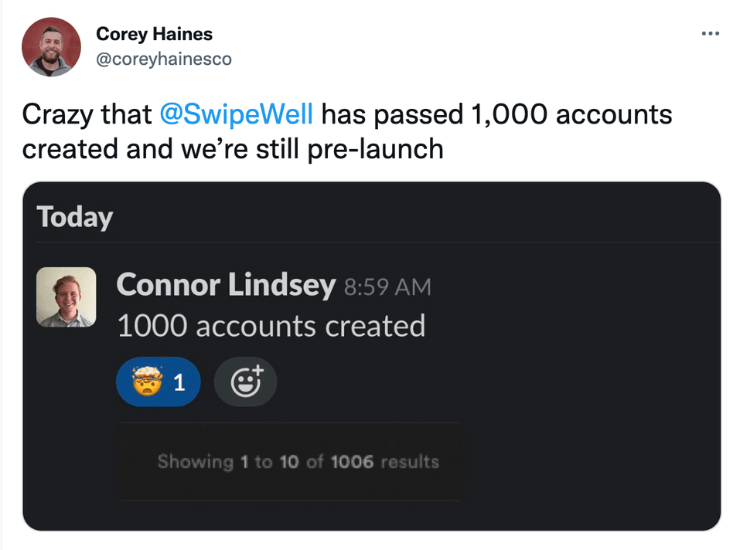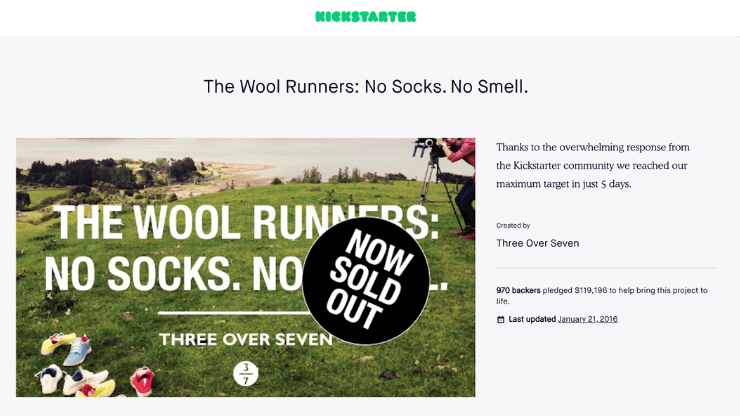Many startup founders ask if they should even bother with a proof of concept. Why not just go straight to building a minimum viable product?
The truth is MVPs require significant capital investments - often $35K+ with US developers. That’s a lot of cash to invest in something that might end up being part of the nearly 90% of startups that fail.
Building a proof of concept before kicking off an MVP project can help significantly reduce startup risk by validating market demand and product feasibility quickly and at a very low cost.
- What is a software proof of concept?
- Why are proof of concepts important in software development?
- Proof of concept goals
- 7 proof of concept examples from real startups
- 1. Test the waters with an explainer video (Dropbox)
- 2. Build demand before you have a product (SwipeWell)
- 3. Validate an idea through customer interviews (Drip)
- 4. Evaluate an idea with crowdfunding (Allbirds)
- 5. Asses demand with a landing page (Buffer)
- 6. Experiment with a simple prototype (Instacart)
- 7. Let another company do the heavy lifting (Etsy)
- Proof of concept development process
- Conclusion
What is a software proof of concept?
A software proof of concept (PoC) is designed to demonstrate the feasibility of a proposed software solution. A proof of concept could be as informal as creating a marketing video and gauging interest in the product idea or as formal as creating a simple hand-built version of the software to test its feasibility.
Regardless of the exact approach, proof of concepts are typically low cost and developed very early in the formation of a new business or product idea. They can be used to justify later stages of product development such as a prototype or minimum viable product (MVP).
A successful proof of concept will answer the questions “is this idea feasible?” and “is this worth developing further?”
Why are proof of concepts important in software development?
While not the right fit for everyone, a PoC project is an important step for many startup teams as it can test out one or more business concepts before moving on to develop a full product prototype or raise funding.
Proof of concepts are particularly important for businesses that are entering an unknown market or introducing a new type of product. Depending on your product idea you may find that a proof of concept is helpful to:
- Test a new business model or strategy
- Validate a project idea is worth pursuing further
- Gauge market demand
- Determine interest in a new or original idea
- Get feedback from the target market

Ultimately, proof of concepts can help new business owners validate their ideas, increase their chances of success and avoid wasting time and resources on projects that are doomed to fail.
Proof of concept goals
As you make a plan to test your business idea with a proof of concept, you should have first thought about what your goals are as well as have defined success criteria for your project. What are you trying to accomplish by building a proof of concept? Some goals might include:
- To collect feedback from your target audience
- To visualize how the basic features will look
- To gauge interest in your product
- To attract potential investors
- To validate if your idea is feasible
Your high-level goals for the proof of concept will dictate what type of proof of concept you should build, what your budget and timeline should look like, and what team members need to be involved in the process.
Remember, a proof of concept is different from a product prototype or minimum viable product. To help keep costs to a minimum, proof of concept project teams should be as small as possible (often just one person). While some teams choose to hire project managers to help develop the proof of concept, most teams should be able to handle the PoC build internally.
7 proof of concept examples from real startups
We often hear about an early version of our favorite apps, but these “early” versions were often months or even years after the first proof of concept was built. If you’re building your own software product, it can be helpful to see how others before you have started out, so let’s take a look at 8 successful proof of concept stories.

Test the waters with an explainer video (Dropbox)
When you think of a proof of concept, you probably don’t think of making a video. But, that’s exactly what Dropbox did in the early days of their business. They aimed to answer the question “does this solution resonate with people.”
And, resonate it did.

The video demonstrating potential basic features of the software went viral. Dropbox’s beta sign-up list went from 5,000 to 75,000 overnight thanks to the proof of concept video they built.
Using a simple video (as opposed to actual working software), Dropbox was able to draw a very large audience. This accomplished a few things. First, it helped them validate that their idea was valid - they had real people interested in it! And, second, they built an audience (future paying customers) before the product was even built.
Build demand before you have a product (SwipeWell)
Dropbox created demand by using a video, but there are many other ways to generate (and validate) demand before you ever have a product. Many companies such as AngelList and SwipeWell have built simple websites and blogs to stir up interest before they ever built a full product.
AngelList, a company that started as a site introducing tech startups to investors, made a very early business introduction by way of a blog. The blog garnered so much interest that they used it to build an email list, which later turned into a means to acquire their first customers.
SwipeWell recently announced on Twitter that they have 1,000 accounts created before they’ve launched their product. This is another proof of concept process that is built around the idea that you can (and should) build demand before you have a product. Doing so allows you to first and foremost prove there is interest in your idea, and second, allow you to more quickly scale once your product is launched.

Validate an idea through customer interviews (Drip)
Email marketing engine, Drip, aimed to validate the value of their product idea by talking to potential customers. The founder conducted interviews within his own network to see how much people would be willing to pay for the product he aimed to develop.
This proof of concept example demonstrates the value in keeping this phase high-level. The aim of the PoC should be to validate the proposed idea, not to provide technical proof of its validity or provide a working model of the end product.
OpenBay also interviewed customers during the proof of concept stage, but their goal was to see what people thought of their idea more generally. As a marketplace platform, they wanted to validate that both sides of the marketplace resonated with their potential product.
Doing this type of market research through interviewing your target audience is a great way to prove your business concept is valid before you begin the costly software development process.
Evaluate an idea with crowdfunding (Allbirds)
It’s one thing to ask people how much they would pay for a product. It’s another thing altogether to actually ask people to _pay. _That’s exactly what companies like Allbirds and Pebble did long before they had a shipping product.

Today it’s easy to set up crowdfunding through a site like Kickstarter. A business can put their idea out into the market and have the option for people to “pre-pay” for the product before it’s actually ready. This type of proof of concept tests not just if people are interested but if they’ll actually get out their credit cards and put real money in.
It’s a great option for companies who are looking to kill two birds with one stone and validate consumer interest and also raise capital to move onto building a prototype or minimum viable product.
Asses demand with a landing page (Buffer)
If you’re not up for putting your project on a site like Kickstarter, you could opt to build a simple landing page or website to assess demand. Many brands, like Buffer story, are opting to do this “pre-marketing” work before they are even fully funded.

It’s a great way to not only see if people are interested in your idea but also to start establishing yourself in the market and building the foundations of SEO-driven content. This type of proof of concept demonstrates the value of putting your idea out there as early as possible, rather than waiting until you have a minimum viable product.
Experiment with a simple prototype (Instacart)
Prototypes and proof of concepts are often confused. You might hear people actually use these two terms interchangeably, but they are quite different.
In general prototypes are at least a somewhat functional version of the end product. Prototypes aren’t typically a version of the product you could actually ship to customers, but they are an early version that can be used to raise funding or conduct testing.
However, a really early prototype could be used as a proof of concept. Sometimes the best way to test feasibility of something is to actually try to build it.

Instacart founder Apoorva Mehta did just that. He created a simple app that he used as both the “shopper” and the “customer.” He used this early prototype version of Instacart to validate his idea was possible.
Similarly, Stripe founders built a quick-and-dirty version of their app in their college dorm rooms. Their aim was less to validate its feasibility and more to experiment with functionality and get input from friends.
Building a very basic prototype as your proof of concept can work for many companies. Sometimes the only way to try out an idea is to put in a little software development work early on. However, be very cautious that you do not overspend on this stage of product development. If you can’t implement the simple prototype yourself (or at least at a very low cost), we recommend you try a different software proof of concept process.
Let another company do the heavy lifting (Etsy)
Sometimes instead of building a proof of concept from scratch you can simply observe what’s already working in the market and base a product off of that.
This is exactly what Etsy did. They observed how well eBay was doing, and they decided to build a similar site that was more craft-focused.
This validation-by-observation is perhaps the simplest form of a proof of concept. But, you should be careful not to make too many assumptions when doing this kind of observation. eBay may have helped prove the validity of a digital consumer-to-consumer marketplace, but it didn’t necessarily prove the validity of such a site for the crafting niche.
Regardless, letting other companies do the heavy lifting and using keen observation skills can help prevent unnecessary spending on a pilot project or proof of concept.
Proof of concept development process
As we’ve seen, proof of concepts can come in many forms from ultra-basic blog posts you could spin up in a matter of hours to a somewhat-functional app interface that might take weeks or months to build.
Because of the wide range of types of projects, the PoC development process can vary quite substantially. However, proof of concept development generally follows these steps:
- Set goals for the proof of concept
- Decide on the general PoC approach
- Choose the right technologies or platforms
- Select the development team
- Build the proof of concept
- Asses the results
Conclusion
With all of this proof of concept inspiration, you might already be thinking of a few ways you can spin up a proof of concept for your own startup.
If you’re not sure how to move forward with PoC development, don’t be afraid to reach out. At SoftKraft, we provide end-to-end product development support. We’ll help you sort out your ideas, develop a basic PoC and then move right into developing an MVP to help get you your product to market faster.







